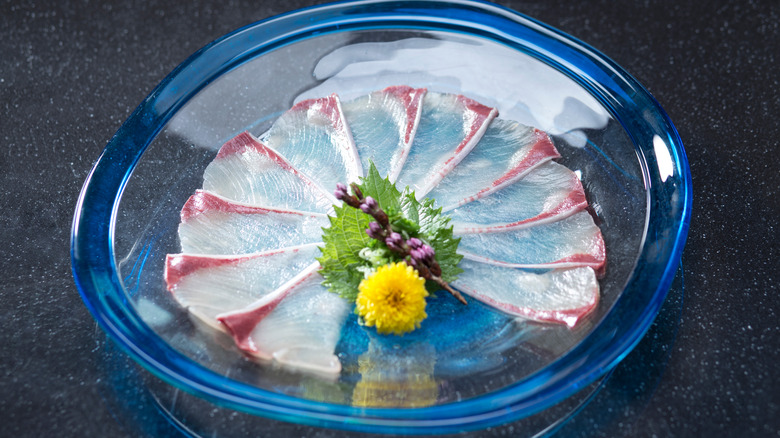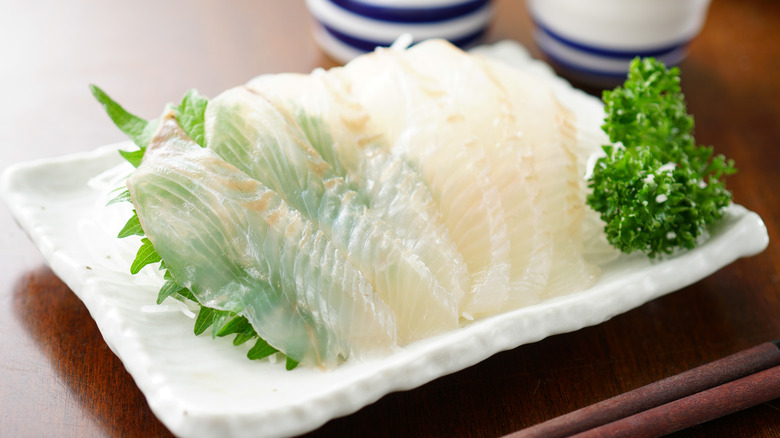The Absolute Best Type Of Fish For Usuzukuri Sashimi
Head to almost any sushi restaurant and you're bound to find thinly sliced fish, aka sashimi, on the menu. Technically speaking, sashimi can also consist of thinly sliced yuba tofu skin, as well as raw beef, deer, and horse, per Japan-Guide. Sashimi pieces are typically dipped in small bowls of soy sauce, though ginger and wasabi may be used to enhance the flavor as well.
Sashimi lovers may have seen salmon, octopus, squid, and surf clam on the menu, but what about usuzukuri sashimi? These thinly sliced fish are often beautifully arranged on a plate, typically in a circle, chrysanthemum, or spiral pattern, and garnished with momiji leaves, green onions, raw jalapeño slices, or lemon wedges (per Umami Mart).
One of the most eye-catching aspects of usuzukuri sashimi lies in the translucence of the fish, which makes the surrounding garnishes and the plate below it stand out more. For that reason, only a certain type of fish should be used for usuzukuri sashimi. Here's what that is.
Look for white fish
According to Umami Mart, usuzukuri translates to "thinly sliced," and this method brings out the translucence of white fish the best. Such options include halibut, blowfish, or Japanese sea bream. Aesthetics aside, thinly sliced fish also yields a bouncy texture, which is known as "hagotai." "Atsu-giri," or thick-cut fish, is best reserved for octopus, lean tuna, or giant clam.
Syosaku Japan states that farmed halibut is the go-to for usuzukuri sashimi. Wild caught halibut may be used as well, but stick to purchasing the fish during their spawning season — November-March, per Alaska's Department of Fish and Game – for the best quality.
Usuzukuri sashimi differs from regular sashimi in taste, texture, and presentation. In fact, some of the most intricate and beautifully-designed plates are used for this type of sashimi, which is usually prepared on special occasions. To enjoy usuzukuri sashimi for yourself, be sure to look for white fish, like halibut or blowfish, when making your own plate or ordering some at a sushi restaurant.

